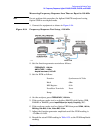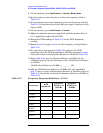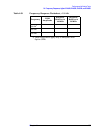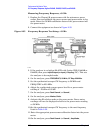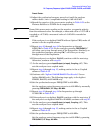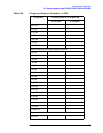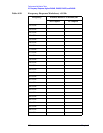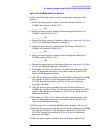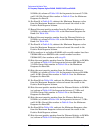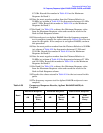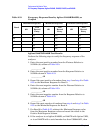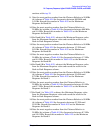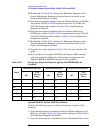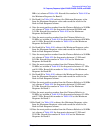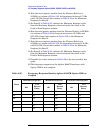
Chapter 2 205
Performance Verification Tests
24. Frequency Response, Agilent E4404B, E4405B, E4407B, and E4408B
Agilent E4404B/E4405B Test Results
Perform the following steps to verify the frequency response of the
analyzer.
1. Enter the most positive number from the Flatness Relative to
50 MHz (dc) column of Table 2-50:
____________ dB
2. Enter the most positive number from the Response Relative to
50 MHz column of Table 2-51:
____________ dB
3. Record the most positive of numbers from step 1 and step 2 in Table
2-53 as the Maximum Response for Band 0.
4. Enter the most negative number from the Flatness Relative to
50 MHz (dc) column of Table 2-50:
____________ dB
5. Enter the most negative number from the Response Relative to
50 MHz column of Table 2-51:
____________ dB
6. Record the most negative of numbers from step 4 and step 5 in Table
2-53 as the Minimum Response for Band 0.
7. For Band 0 in Table 2-53, subtract the Minimum Response value
from the Maximum Response value and record the result in the
Peak-to-Peak Response column.
8. Note the most positive number from the Flatness Relative to 50 MHz
(dc) column of Table 2-52 for frequencies between 3.0 GHz and
6.7 GHz. Record this number in Table 2-53 as the Maximum
Response for Band 1.
9. Note the most negative number from the Flatness Relative to
50 MHz (dc) column of Table 2-52 for frequencies between 3.0 GHz
and 6.7 GHz. Record this number in Table 2-53 as the Minimum
Response for Band 1.
10.For Band 1 in Table 2-53, subtract the Minimum Response value
from the Maximum Response value and record the result in the
Peak-to-Peak Response column.
11.If the analyzer is an Agilent E4404B, then continue with step 15.
12.Note the most positive number from the Flatness Relative to 50 MHz
(dc) column of Table 2-52 for frequencies between 6.7 GHz and
13.2 GHz. Record this number in Table 2-53 as the Maximum
Response for Band 2.
13.Note the most negative number from the Flatness Relative to



